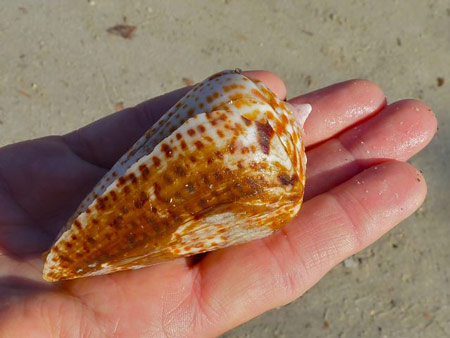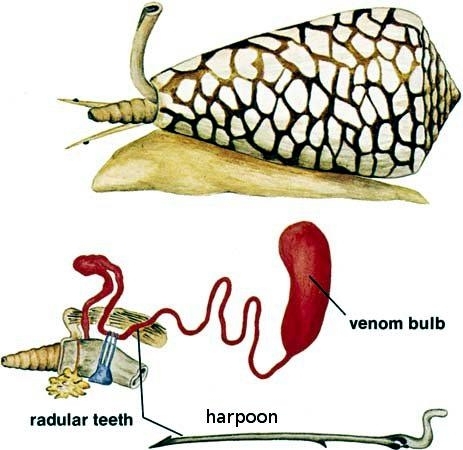

The article can be found at: Torres et al. “What’s exciting about this finding is that they are doing it using an interesting set of small molecules that could one day inspire the development of new types of medications to alleviate pain and other conditions.” “In essence, these cone snails have found a way to turn the natural sex drive of their prey into a lethal weapon,” said senior author Dr. Moving forward, the team hopes to use these newly-discovered small molecules as a starting point for developing novel drugs.

Accordingly, how cone snails actually hunt in the wild still remains unknown. Indeed, in their laboratory experiments, the group had to use artificial moon light to induce sexual responses in worms when exposed to cone snail pheromones. “The snails have to use other hunting techniques in these incidences.” Joshua Torres, formerly from UP and U of U.

“If you expose the worms when they are either immature or not sexually active, the mimic pheromones don’t have any effect,” explained lead author and Filipino scientist Dr.
#Cone snail harpoon full#
After all, mature worms are only sexually active for a short time, generally coinciding with the presence of a full moon. However, the process isn’t as straightforward as it appears. Then it goes in for the kill: harpooning the worm with its venom to paralyze it. First, the cone snail exposes the fire worm to its fake sex pheromones, making it easier to coax the worm out from coral reefs. imperialis lures fire worms in the wild through a two-step process.

Though further studies are needed, the researchers suspect that C. Meanwhile, the chemical genuanine sparked a similar effect on male fire worms, prompting them to release sperm. One chemical, called conozolium A, whipped female worms into a frenzy, causing them to swim in tight, tail-chasing circles before ejecting their eggs. imperialis produces small chemicals that mimic the pheromones triggering sexual activity in fire worms. In laboratory experiments, the team discovered that C. While researchers have historically focused on fish-hunting cone snails, an international team led by researchers from the University of the Philippines (UP) and University of Utah (U of U) turned their attention to Conus imperialis-a species of cone snail that preys on fire worms. For decades, scientists have been fascinated by the chemical makeup of these fast-acting venoms, exploring ways to repurpose these poisonous peptides into potential therapeutics. Using a harpoon-like tooth at the end of their proboscis, cone snails inject venom into their prey, instantly paralyzing them and allowing the snails to slowly reel the immobilized animal into their waiting mouths. So called for their uniquely shaped shells, the colorful patterns and small sizes of these mollusks belie their venomous nature. Meet the femme fatales or lady killers of the marine world: the unassuming cone snails. Their study was published in Science Advances. 3, 2021) – In a spot of underwater warfare, international researchers have identified the small molecules that cone snails release to lure their marine worm prey out of hiding.


 0 kommentar(er)
0 kommentar(er)
